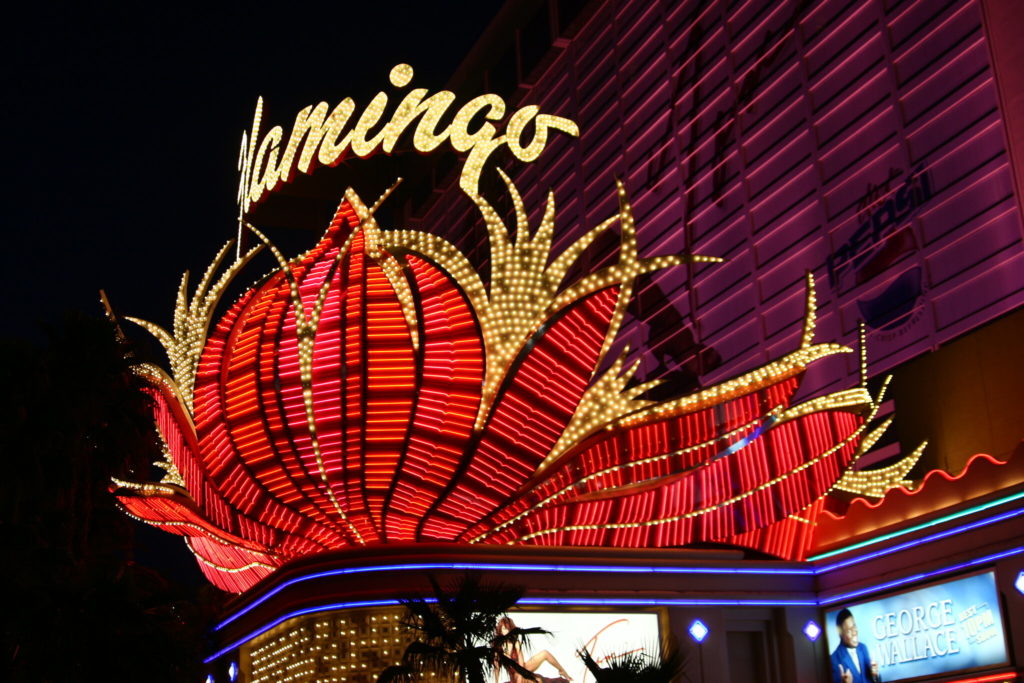
Staying power
I have a very specific fond memory of the Flamingo Las Vegas. It was probably 2005, the first year I covered the World Series of Poker live at the Rio. My brother came to visit and, having seen all he was going to see at the WSOP, decided to enter a small daily poker tournament at the Flamingo. He wasn’t particularly good at poker – just dabbled a little online – but he somehow won the thing and several hundred dollars ($700, maybe?). He had brought a friend along on the trip and promised us that if he won the tourney, he’d treat us to a fancy steak dinner. My brother was going to make good on that promise, but the other two of us were starving and didn’t want to wait for a sit-down meal, so we said screw it, let’s go to In-N-Out Burger. We had never been, heard it was great, and sure enough, we loved it. So ended a fun day in Las Vegas.
If I recall correctly my wife and I also played a table game there once and the dealer actually slapped my wife’s hand when she showed me her cards. That was certainly a quick lesson on casino rules and etiquette.
On Sunday, the Flamingo turned 75 years old. It was the third casino built on the Las Vegas Strip and currently ranks as the oldest still in operation on the famous stretch of road. It is also the last remaining casino on the Strip that was built before 1950.
A colorful history
The Flamingo was originally the project of Billy Wilkerson, founder of The Hollywood Reporter, owner of nightclubs on Sunset Boulevard, and a compulsive gambler. He ran into financial troubles during development because of his gambling, so along came infamous mobster Bugsy Siegel and his partners, who bought two-thirds of the project. Eventually, Wilkerson was out completely.
Opened on December 26, 1946, the Flamingo is considered the luxury casino-hotel resort on the Strip, a harbinger of the Las Vegas’s future. It also had a very unique look for the time, waving off the typical Wild West theme of the day for a Miami Beach, art deco style. Interestingly, it closed after only six weeks because the hotel wasn’t done and the casino took heavy losses. The Flamingo reopened withi a completed hotel on March 1, 1947. Less than four months later, Bugsy Siegel was killed. Moe Sedway and Gus Greenbaum, owners of the El Cortez, took over.
“The Flamingo confirms the adage that truth is stranger than fiction. It was a short window of time in Las Vegas that proved to have lingering effects for decades,” Geoff Schumacher, a former Las Vegas journalist and current vice president of exhibits and programs at the Mob Museum, told the Las Vegas Review-Journal. “I imagine, it’s possible that if Bugsy Siegel hadn’t built a luxury resort on Highway 91 as he did, we still may have ended up with the Las Vegas Strip. But he certainly accelerated that progress.”
The property was sold in 1960 and then again in 1967 to famed Las Vegas magnate Kirk Kerkorian. It was he who moved the Flamingo out of the mob era and more toward the corporate gambling we see today. Hilton then bought the Flamingo in 1972. In 1998, the property was spun off with several others as part of Park Place Entertainment, which later became Caesars Entertainment. Harrah’s bought Caesars in 2005, renamed itself as Caesars Entertainment Corporation in 2010 and still owns and operates the Flamingo today.
Image credit: Kelly Verdeck via Flickr























